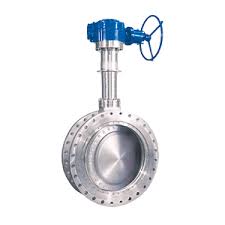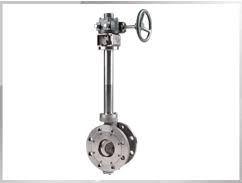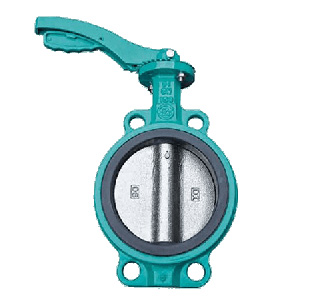Cryogenic Butterfly Valve

The Application of Cryogenic Butterfly Valve
The Metal Seated Butterfly Valve is engineered for challenging conditions, particularly in cryogenic environments. Crafted from A105 material, it adheres to API 607 standards, ensuring robust performance even in extreme settings. Featuring Trim 12 material, it’s optimized for precise flow control while maintaining structural integrity. With its superior sealing mechanism, this valve effectively prevents leakage, offering dependable operation. From the trusted Cameron brand, it integrates top-grade components like butterfly valve seals and a durable butterfly valve seat. Made from A350 LF2 material, it enhances resilience in cryogenic settings. Available in various sizes to suit different applications, this valve boasts high CV value design, ensuring efficient flow regulation. With the versatility of SMS butterfly valves, it meets diverse industrial needs. In essence, the Metal Seated Butterfly Valve delivers reliable performance, making it ideal for demanding cryogenic applications.
Features of Cryogenic Butterfly Valve
- Cryogenic by Design: These valves are made for extremely low temperatures, handling cryogenic fluids efficiently and reliably with minimal maintenance.
- Compact Size for Better Temperature Control: Their small size helps stabilize temperatures quickly during line heat-up or cool-down.
- Application Flexibility: Built with stainless steel, they can handle various media types, offering versatility in service.
- Designed for Easy Actuation and Adjustment: With integrally welded shafts and bonnet extensions, valve actuators can be easily mounted above pipeline insulation, allowing for simple adjustment of the stem packing gland pressure.
The Parameter of Cryogenic Butterfly Valve
- Temperature Range: Designed to operate efficiently in sub-zero temperatures.
- Valve Size: Available in various sizes to accommodate different pipeline requirements.
- Material Construction: Constructed with durable materials like stainless steel to withstand extreme cold temperatures.
- Sealing Mechanism: Equipped with robust sealing mechanisms to prevent leakage and ensure reliable performance in cryogenic conditions.
- Pressure Rating: Capable of withstanding high pressures commonly encountered in cryogenic applications.
- Flow Capacity (Cv): Provides information about the flow capacity of the valve at a given pressure drop, important for selecting the right valve size for specific applications.
- Actuation Compatibility: Designed to be compatible with various actuation systems for automated operation in cryogenic environments.
- Certifications: Compliant with industry standards such as API 607 for fire-safe performance in cryogenic conditions.
The Operation Theory of Cryogenic Butterfly Valve
The operation theory of a Cryogenic Butterfly Valve revolves around regulating the flow of cryogenic fluids. Unlike a ball valve, which uses a spherical closure, a butterfly valve employs a disc that rotates on a central axis. This rotation controls the flow through the valve. The butterfly wafer valve design ensures a compact profile suitable for tight spaces. With options available in various sizes, including 5 butterfly valve and 1/2 inch butterfly valve, they offer versatility in different applications. When compared to a gate valve, butterfly valves provide quicker operation and require less space.

The Parameters Table of Cryogenic Butterfly Valve
| Parameter | Description |
|---|---|
| Valve Size | Various sizes available (e.g., 2″, 3″, 4″) |
| Body Material | Stainless steel, carbon steel, or other alloys |
| Disc Material | Stainless steel, carbon steel, or other alloys |
| Seat Material | Metal (e.g., stainless steel) |
| Stem Material | Stainless steel |
| Seal Material | Resilient metal |
| Pressure Rating | API 607 compliant |
| Temperature Rating | Suitable for cryogenic applications |
| End Connection | Wafer, lug, or flanged |
| Actuator Compatibility | Manual or automated |
Relevant Information about Cryogenic Butterfly Valve
- Rotor: The rotating disc within the valve body that controls the flow of fluid.
- Stator: The stationary part of the valve that provides support and guidance for the rotor.
- Universal Joint: A mechanical connection between the actuator and the valve stem, allowing for rotation of the disc.
- Shaft Seal: Sealing mechanism around the valve stem to prevent leakage of fluid.
- Driving System: The mechanism responsible for opening and closing the valve, which can be manual or automated depending on the application and operational requirements.

